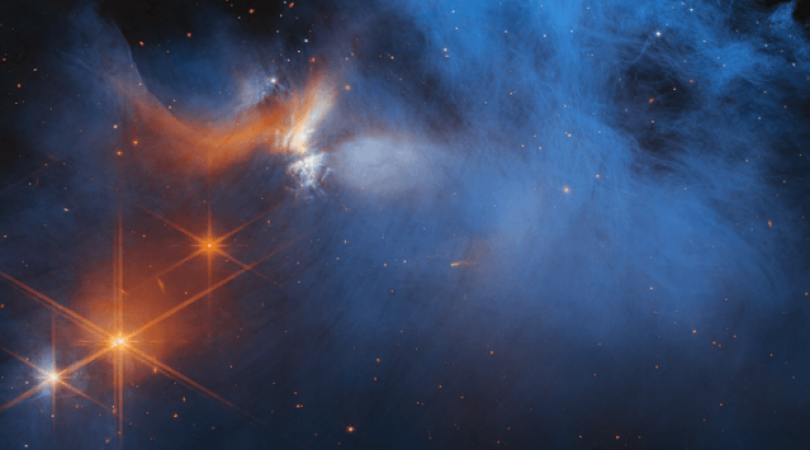
USA: Using the James Webb Space Telescope, a global team of astronomers has compiled a comprehensive catalog of the coldest, darkest ice ever measured in a molecular cloud.
The image shows the central region of the 630 light-year-distance Chameleon I molecular cloud. The simplest complex organic molecule, methanol, as well as carbonyl sulfide and ammonia were all found in frozen form.
The $10 billion James Webb Space Telescope is providing us with some breathtaking views of the universe. This time, the telescope has revealed "the dark side of pre-stellar ice chemistry" with the help of its on-board infrared camera. The European Space Agency, the Canadian Space Agency and NASA are all participants in the Global Web Program.
Also Read: An AI chatbot from Google will compete with ChatGPT
Ice is a key component of a habitable planet because it contains many essential elements, also known as CHONS, including carbon, hydrogen, oxygen, nitrogen and sulphur. It is the most thorough survey of the icy components that will form future star generations.
The young, outflowing protostar Ced 110 IRS 4, seen in the upper left corner in orange, illuminates the wispy cloud material seen in blue in the center of the image in the infrared. The starlight in the background can be seen as orange dots behind the cloud. Ice in the cloud, which absorbs the light of passing stars, can be found using light.
The lead researcher, Melissa McClure, said the findings "provide insight into the early, deep chemistry stage of ice formation on interstellar dust grains that would grow into the centimetre-sized pebbles from which planets form in disks."
These findings "open a new window on the way the simple and complex molecules that are needed to produce the fundamental components of life are formed."
Also Read: The rotation of the Earth's core has ceased and it may now reverse
In addition to the molecules identified, the team also discovered molecules more complex than methanol, including carbonyl sulfide, ammonia, methane, and methanol. These results demonstrate for the first time that complex molecules originate in the coldest regions of molecular clouds prior to star formation.
According to Will Rocha, a member of the discovery team, the complex organic molecules suggest that "many star and planetary systems that have evolved in this particular cloud will have obtained molecules in a fairly advanced chemical state."
Also Read: Why are the NASA Artemis Accords important?
This may indicate that the presence of precursors of prebiotic molecules in planetary systems is a specific consequence of star formation rather than a peculiarity of our Solar System.